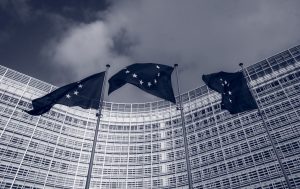“In God we trust; all others must bring data“. This famous quote, widely attributed to the US statistician W. Edwards Deming, refers mainly to the importance of data for any type of business (or policymaking). However, raw data alone is largely useless as it describes unorganised/random facts or observations without any context, e.g., geographical locations, bank statements, energy prices, population size – on their own they do not have any meaning. Once put into context, data turns into information. For this purpose, raw data is usually refined in terms of data processing and filtering, and possibly analysed to some extent, which in turn results in specific information. This is the “nice-to-know” level, but in fact such information adds no value on its own. Actionable insights or intelligence describes information that has a specific purpose or aims to answer a specific question (strategical level). This commonly requires a deep understanding of the context and the need to combine different information to understand the big picture.
Let’s take, for example, the social media postings on a specific topic. The pure number of mentions represents the raw data. On its own, this number doesn’t tell much. Moving a step further, one can set it in context and compare the number to the number in the previous period: Is the trend stable? Do we observe any significant changes? Is the development the same as in country B? This moves us to the next level, where we already have information that brings the data together, albeit in a simplistic way. Eventually, a combination with, for example, sentiment analysis, geolocalised information and network analysis can reveal potential hotspots or indicate upcoming protest activities. At this stage, we have actionable insights which provide strategic support for informed decision-makers.
The Intelligence Cycle
In its most standard model, the intelligence process, includes five steps in order to exploit available information, turn it into intelligence and render it available to the end users and decision-makers:
- Planning and Direction includes the identification of the information needs and requirements and the establishment of common understanding.
- Collection refers to gathering of raw information based on the requirements determined in the previous step. In order to do so, first, relevant sources and ways of data collection must be identified. This is crucial for the success of the whole process, as the selection process is prone to bias.
- Processing describes the process of data transformation from raw data as collected in the previous step into a form usable and understandable by analysis, i.e., the raw data turns into information.
- Analysis and Production is the conversion of the raw (or rather pre-processed) information into intelligence. Depending on the context and use case this step includes the exploitation, evaluation, and analysis of all available information and the preparation of the desired output (e.g., reports summarizing the gained insights that allow for the identification of patterns and actionable insights).
- Dissemination and Integration refers to the delivery of the outcomes to those who initiated the intelligence requirements (e.g., customers, decision-makers, policymakers).
Although the cycle has a predefined natural flow, insights gained during each step may lead to a revision of previous steps. The process is considered completed when the end user provides feedback regarding the value of the product. Ideally, feedback possibilities should be considered thorough the whole cycle.
Coming Next in the OSINT series
- OSINT Basics (October, 2023)
- OSINT Tools and Technologies
- OSINT in the Security Context
- OSINT for Civil Society and Policymakers

Maia Rohm, PhD
Maia Rohm is a senior AI research engineer at HENSOLDT Analytics GmbH. Maia has more than 20 years of experience in standardization, content-based multimodal information retrieval, and data processing, analysis, and understanding. Her current focus of work is connecting the dots and generating insights from data.






